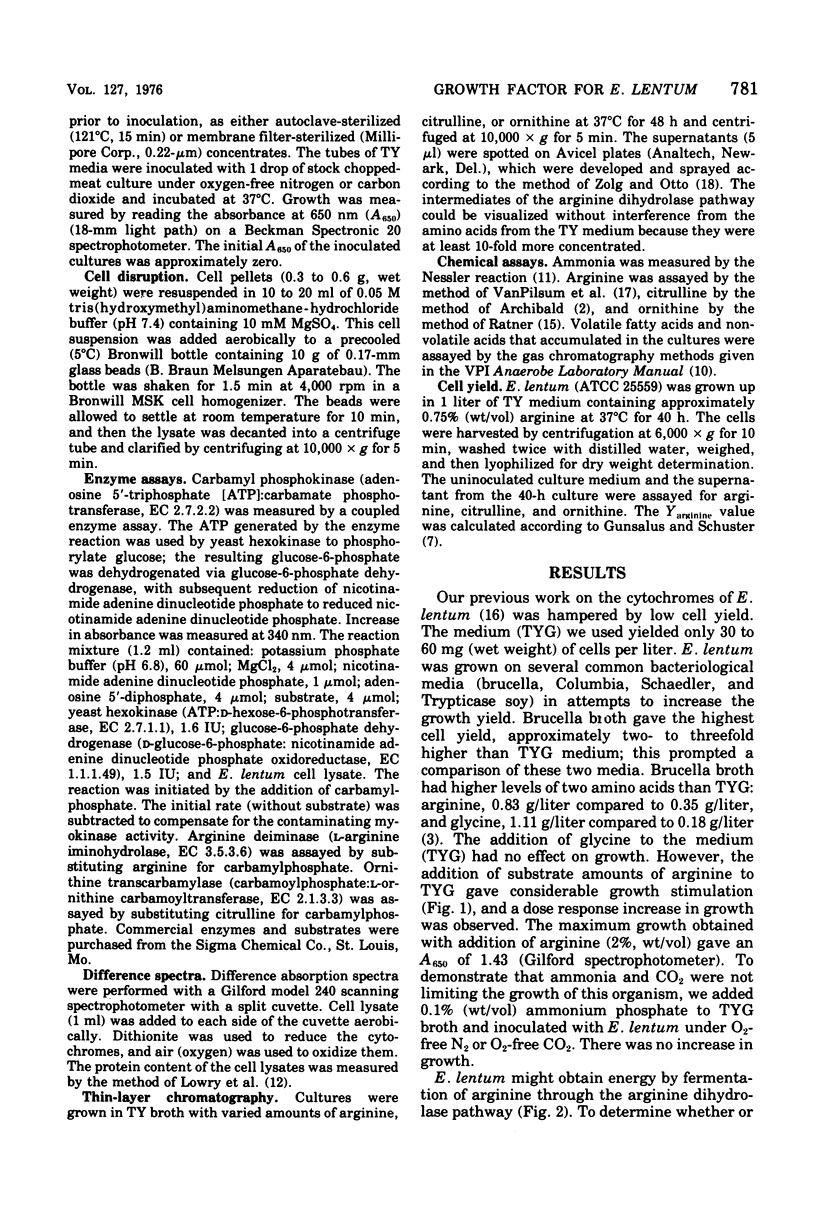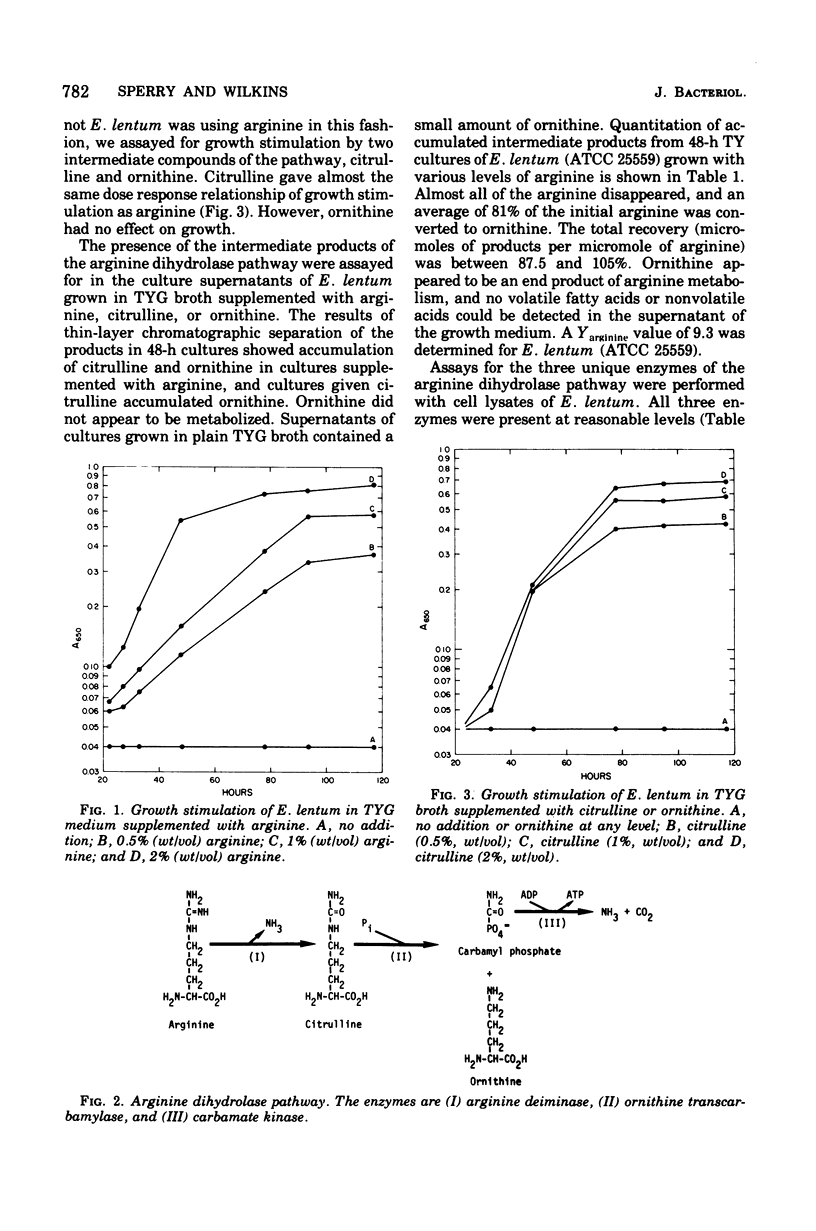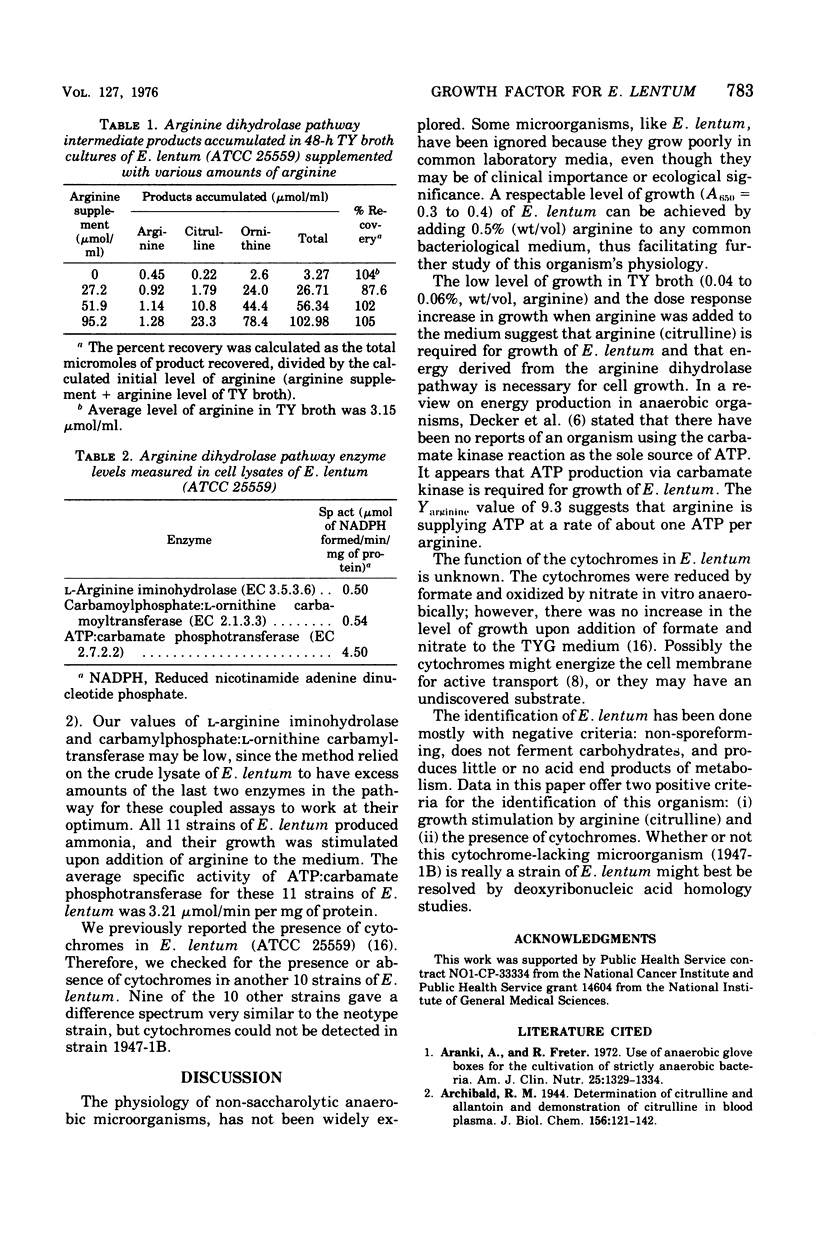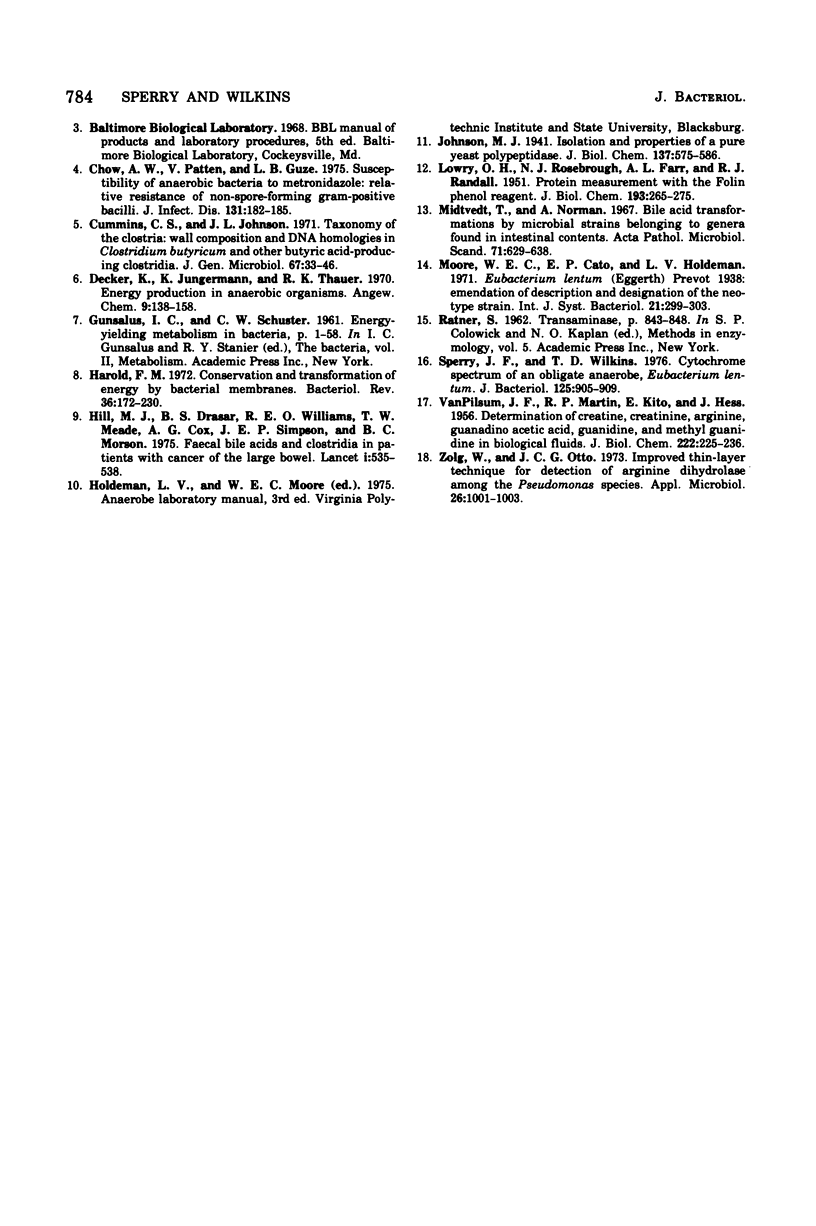Abstract
Eubacterium lentum is a gram-positive, asaccharolytic, obligately anaerobic bacillus, which grows to a low turbidity (absorbancy at 650 nm = 0.05 to 0.1) in peptone-based medium. The addition of substrate amounts of arginine or citrulline dramatically increased growth (absorbancy at 650 nm =1.4). The presence of an arginine dihydrolase pathway was confirmed by measurement of the necessary enzymes and demonstration of the intermediate compounds. The production of adenosine 5'-triphosphate from the arginine dihydrolase pathway appeared to be the sole source of energy for growth of this organism. Each of 11 strains showed definite growth stimulation. Ten of the 11 strains had cytochromes. Growth stimulation with arginine and the presence of cytochromes offer two new positive criteria for the identification of E. lentum.
Full text
PDF




Selected References
These references are in PubMed. This may not be the complete list of references from this article.
- Aranki A., Freter R. Use of anaerobic glove boxes for the cultivation of strictly anaerobic bacteria. Am J Clin Nutr. 1972 Dec;25(12):1329–1334. doi: 10.1093/ajcn/25.12.1329. [DOI] [PubMed] [Google Scholar]
- Chow A. W., Patten V., Guze L. B. Susceptibility of anaerobic bacteria to metronidazole: relative resistance of non-spore-forming gram-positive baccilli. J Infect Dis. 1975 Feb;131(2):182–185. doi: 10.1093/infdis/131.2.182. [DOI] [PubMed] [Google Scholar]
- Decker K., Jungermann K., Thauer R. K. Energy production in anaerobic organisms. Angew Chem Int Ed Engl. 1970 Feb;9(2):138–158. doi: 10.1002/anie.197001381. [DOI] [PubMed] [Google Scholar]
- HESS J., KITO E., MARTIN R. P., VAN PILSUM J. F. Determination of creatine, creatinine, arginine, guanidinoacetic acid, guanidine, and methylguanidine in biological fluids. J Biol Chem. 1956 Sep;222(1):225–235. [PubMed] [Google Scholar]
- Harold F. M. Conservation and transformation of energy by bacterial membranes. Bacteriol Rev. 1972 Jun;36(2):172–230. doi: 10.1128/br.36.2.172-230.1972. [DOI] [PMC free article] [PubMed] [Google Scholar]
- Hill M. J., Drasar B. S., Williams R. E., Meade T. W., Cox A. G., Simpson J. E., Morson B. C. Faecal bile-acids and clostridia in patients with cancer of the large bowel. Lancet. 1975 Mar 8;1(7906):535–539. doi: 10.1016/s0140-6736(75)91556-1. [DOI] [PubMed] [Google Scholar]
- LOWRY O. H., ROSEBROUGH N. J., FARR A. L., RANDALL R. J. Protein measurement with the Folin phenol reagent. J Biol Chem. 1951 Nov;193(1):265–275. [PubMed] [Google Scholar]
- Midtvedt T., Norman A. Bile acid transformations by microbial strains belonging to genera found in intestinal contents. Acta Pathol Microbiol Scand. 1967;71(4):629–638. doi: 10.1111/j.1699-0463.1967.tb05183.x. [DOI] [PubMed] [Google Scholar]
- Sperry J. F., Wilkins T. D. Cytochrome spectrum of an obligate anaerobe, Eubacterium lentum. J Bacteriol. 1976 Mar;125(3):905–909. doi: 10.1128/jb.125.3.905-909.1976. [DOI] [PMC free article] [PubMed] [Google Scholar]
- Zolg W., Ottow J. C. Improved thin-layer technique for detection of arginine dihydrolase among the Pseudomonas species. Appl Microbiol. 1973 Dec;26(6):1001–1003. doi: 10.1128/am.26.6.1001-1003.1973. [DOI] [PMC free article] [PubMed] [Google Scholar]


